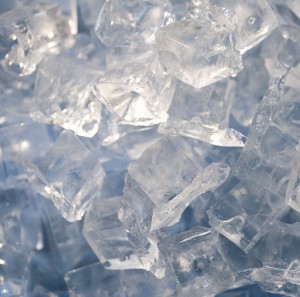 Whilst sitting with an ice pack on my shoulder after another rugby injury at the weekend, I was reminded of a question a lot of patients ask me, “Do I use ice or heat?” So I thought I would take the time to outline the uses of ice and heat in pain management.
Whilst sitting with an ice pack on my shoulder after another rugby injury at the weekend, I was reminded of a question a lot of patients ask me, “Do I use ice or heat?” So I thought I would take the time to outline the uses of ice and heat in pain management.
It is best to try to identify the type of injury someone has before working out how to treat it and generally speaking injuries are characterised as acute or chronic. An acute injury is a short-lived injury with a rapid onset, which is usually accompanied by intense pain. They are often accompanied by warmth and redness in the affected areas, although, these are not always present.
Chronic injuries are usually ones that develop over time and often will have no specific trigger. The pain involved may worsen slowly and is often due to poor posture and postural control over a long period. An acute injury that does not heal by itself will over time take more characteristics of a chronic injury.
Cold therapy
Cold therapy with ice is the best immediate treatment for acute injuries because it reduces swelling and pain. Ice is a vaso-constrictor (it causes the blood vessels to narrow) and it limits internal bleeding at the injury site.
To ice an injury, wrap ice in a thin towel and place it on the affected area for 10 minutes at a time. Allow the skin temperature to return to normal before icing a second or third time. You can ice an acute injury several times a day for up to three days.
Cold therapy is also helpful in treating some overuse injuries or chronic pain in athletes. An athlete who has chronic knee pain that increases after running may want to ice the injured area after each run to reduce or prevent inflammation.
A great tip for athletes with persistent injury sites is to freeze water in plastic cups. When showering after exercise, use the blocks of ice to massage the injury site for 2-3 minutes to help prevent inflammation.
Heat Therapy
Heat is generally used for chronic injuries or injuries that have no inflammation or swelling. Sore, stiff, nagging muscle or joint pain is ideal for the use of heat therapy. Don’t apply heat after exercise. After a workout, ice is the better choice on a chronic injury.
Because heat increases circulation and raises skin temperature, you should not apply heat to acute injuries or injuries that show signs of inflammation. Safely apply heat to an injury 15 to 20 minutes at a time and use enough layers between your skin and the heating source to prevent burns.
Moist heat is best, so you could try using a hot wet towel. You can buy special athletic hot packs or heating pads if you use heat often. Never leave heat pads on for more than 20 minutes at a time or while sleeping.
For more information on using ice or heat, or, if your injury persists, call us on 01425 474046 to discuss your injury.
